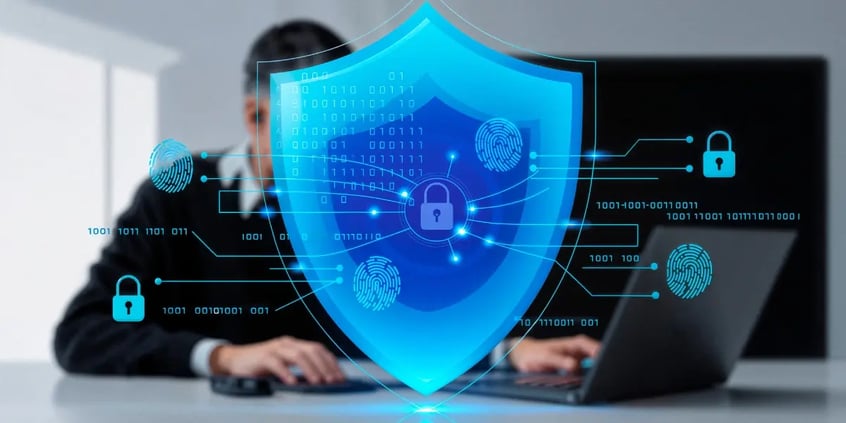
In today’s digital landscape, cybersecurity incidents rarely begin with brute-force attacks or malware alone. Increasingly, they stem from compromised identities—stolen credentials, malicious insiders, or unmonitored privileged accounts. As organizations digitize faster, identity has become the new security perimeter.
That’s why auditing IAM activity across multiple applications is now a strategic imperative. It’s not just about detecting unauthorized logins—it’s about building a resilient, auditable, and trust-based foundation for enterprise security.
For decision-makers, the question is no longer if their systems will be tested, but when. And when it happens, how quickly can their teams detect and respond to abnormal identity behavior before damage escalates? This is where Identity and Access Management (IAM) becomes the core of organizational resilience.
Understanding the Context: What is IAM in Cybersecurity?
To understand why IAM auditing is critical, we must first define what is IAM in cybersecurity.
Identity and Access Management (IAM) is the framework of technologies, policies, and processes that ensure the right individuals have the right access to the right resources at the right time—while continuously verifying and recording every action.
It answers three vital questions:
-
Who is accessing the system?
-
What are they allowed to access?
-
How is that access being monitored and controlled?
In modern enterprises, IAM extends beyond authentication and user directories. With the adoption of SaaS platforms, cloud-native applications, and hybrid IT systems, visibility becomes fragmented. Each application—be it Microsoft 365, AWS, SAP, or Salesforce—maintains its own logs and security models.
This leads to a major challenge:
-
A suspicious login in Microsoft 365 may never be linked to a privilege escalation in SAP.
-
An anomalous contractor login in AWS may remain uncorrelated with unusual data downloads in Salesforce.
Without unified auditing, these gaps create exploitable blind spots. And in a threat landscape driven by identity compromise, weak IAM visibility equals weak cyber defense.
Why Auditing IAM Across Multiple Applications Is So Challenging
Auditing IAM activity might appear straightforward—monitor logins, permissions, and role changes. But in hybrid, multi-cloud ecosystems, the reality is far more complex.
Key Challenges Include:
-
Application Silos: Each system—SaaS, on-prem, or custom-built—produces isolated logs with limited correlation.
-
Hybrid IT Environments: Correlating identity data across Azure AD, AWS CloudTrail, and legacy Active Directory is resource-intensive.
-
Log Volume & Noise: Millions of identity events flood systems daily, making real threats hard to distinguish.
-
Lack of Standardization: Each platform logs differently; some include device fingerprints, while others capture only timestamps.
-
Insider & Credential Threats: Stolen credentials make attackers appear legitimate unless correlated across systems.
-
Regulatory Burden: Compliance standards demand end-to-end traceability across every application—fragmented auditing makes this a nightmare.
Without comprehensive IAM auditing, security teams lose visibility when they need it most—during an active cyber incident.
Best Practices for Auditing IAM Activity During a Cybersecurity Threat
When a cyber event unfolds, speed, visibility, and precision determine the outcome. Implementing structured IAM auditing best practices can significantly reduce risk exposure.
-
Centralize Log Collection:
Consolidate IAM logs from SaaS apps, cloud platforms, identity providers (IdPs), and on-prem directories into a single repository—like a SIEM platform or unified audit dashboard. -
Automate Monitoring & Alerts:
Use AI-driven analytics, User and Entity Behavior Analytics (UEBA), and Identity Threat Detection and Response (ITDR) to detect unusual logins, privilege misuse, or access anomalies in real time. -
Apply Least Privilege & MFA:
Restrict over-provisioning and protect high-privilege accounts using Multi-Factor Authentication (MFA) and just-in-time access controls. -
Retain & Protect Logs:
Securely store logs for 12–24 months to support regulatory compliance and forensic investigations. -
Conduct Regular IAM Audit Reviews:
Periodically review access privileges, identify dormant accounts, and detect unauthorized role modifications. -
Automate Incident Response:
Integrate IAM with SOAR (Security Orchestration, Automation, and Response) tools to enable automated account lockdowns, credential resets, and rapid containment actions.
Tools and Technologies Powering IAM Auditing
Effective IAM auditing relies on advanced technologies that integrate visibility, automation, and analytics across the enterprise.
-
SIEM Platforms (Splunk, Microsoft Sentinel, IBM QRadar): Aggregate identity events for real-time threat analysis.
-
Identity Threat Detection & Response (ITDR): Purpose-built for detecting credential misuse and insider threats.
-
Cloud Access Security Brokers (CASBs): Extend IAM visibility to SaaS applications, including shadow IT.
-
Privileged Access Management (PAM): Protect administrator accounts with session monitoring and just-in-time access.
-
SOAR Platforms: Automate remediation workflows once suspicious activity is detected.
-
Cloud-Native Logging (AWS CloudTrail, Azure AD Logs, Google Cloud Audit): Offer deep audit trails for cloud infrastructure.
These tools work best when integrated within a cohesive IAM framework powered by digital trust.
Compliance Mandates Driving IAM Auditing
IAM auditing is not optional—it’s a compliance necessity across global frameworks:
-
NIST SP 800-53: Mandates logging and continuous monitoring of all security events.
-
ISO/IEC 27001: Requires audit-ready access logs to demonstrate security governance.
-
HIPAA Security Rule: Obligates healthcare entities to log and review all access to patient data.
-
PCI DSS Requirement 10: Demands monitoring and logging of all cardholder data access events.
-
Regional Data Protection Regulations (GDPR, NESA, DPA, etc.): Emphasize accountability, transparency, and continuous identity monitoring.
Non-compliance leads to regulatory fines, brand damage, and operational downtime—all avoidable through disciplined IAM auditing.
How eMudhra Enables Trusted IAM Auditing Across Applications
Auditing IAM across multiple applications isn’t just about visibility—it’s about establishing trust, compliance, and resilience. This is where eMudhra brings unique value to the cybersecurity ecosystem.
eMudhra’s Key Contributions:
-
Centralized Visibility:
eMudhra consolidates identity events from on-prem, SaaS, and hybrid systems into a single audit-ready view that simplifies investigation and compliance. -
Digital Trust Backbone:
Through advanced PKI, certificate lifecycle management, and digital signing, eMudhra ensures every user action is authentic, traceable, and non-repudiable. -
Compliance Alignment:
eMudhra solutions are aligned with ISO 27001, PCI DSS, HIPAA, and NESA—ensuring every access log or signing event meets the highest audit standards. -
Scalable Cloud-Ready Solutions:
Designed for hybrid and multi-cloud environments, eMudhra’s IAM and PKI services scale as organizations grow, maintaining continuous trust and compliance. -
Proactive Security Integration:
Seamless integration with emSigner, emBridge, and SecurePass enables strong authentication, encryption, and federated identity management, delivering end-to-end control and trust.
By unifying digital identity with cryptographic assurance, eMudhra transforms IAM auditing from a compliance exercise into a trust-driven business enabler.
IAM Auditing as a Growth Lever
Without robust IAM auditing:
-
Cyberattacks remain undetected until it’s too late.
-
Compliance frameworks such as PCI DSS, HIPAA, and GDPR may be violated.
-
Enterprises face revenue loss, legal penalties, and reputational damage.
With IAM auditing powered by eMudhra’s IAM and PKI expertise:
-
Threat detection and incident response become proactive.
-
Compliance becomes continuous and automated.
-
Enterprises strengthen customer trust and brand integrity.
In a digital-first world, auditing IAM across multiple applications is not merely about risk reduction—it’s about enabling secure, compliant, and scalable business growth.
Final Word
The question is no longer “what is IAM in cybersecurity?” but rather, how effectively can your organization audit IAM activity across every application when a cyber threat strikes?
With eMudhra’s trusted identity, PKI, and IAM solutions, businesses can transform IAM auditing into a strategic advantage—achieving real-time visibility, regulatory confidence, and enduring digital trust.
👉 Ready to unify IAM auditing across your enterprise applications?
Explore how eMudhra empowers you to build digital trust while protecting your organization from evolving cyber threats.
